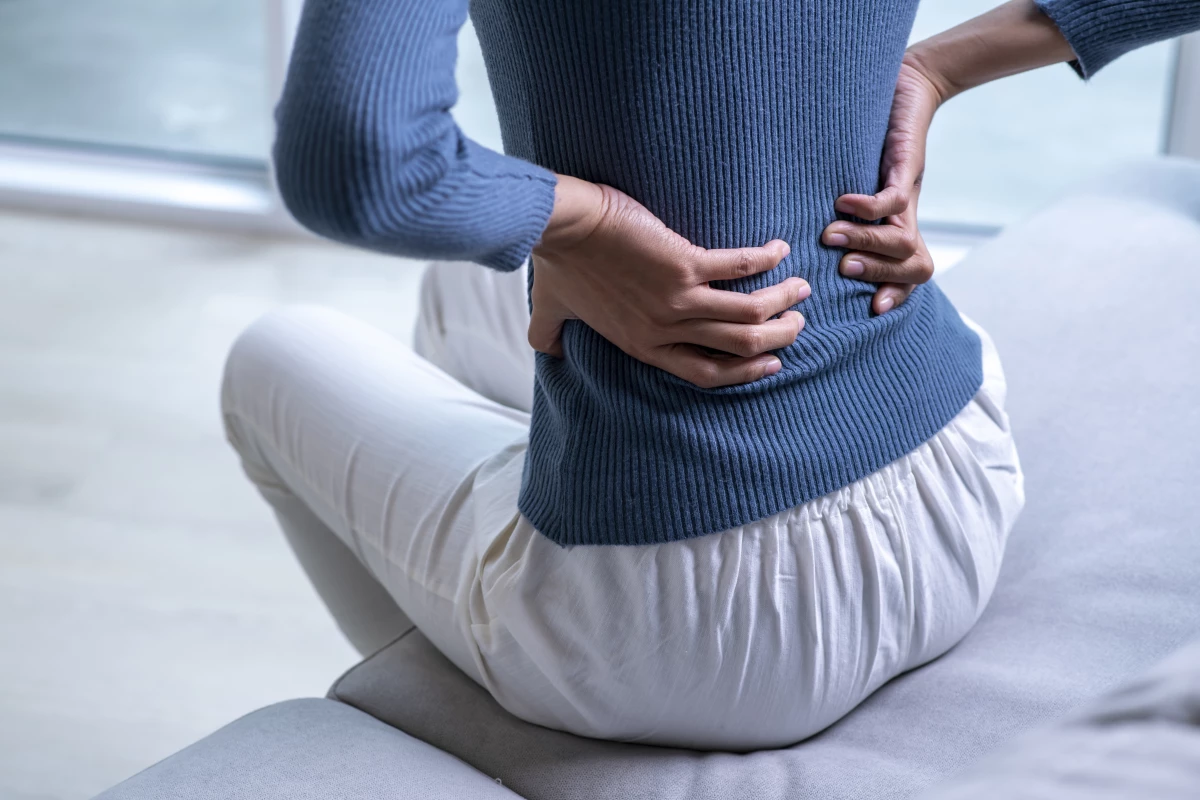In big news for the millions who suffer from chronic lower back pain, scientists have made a potentially huge breakthrough in understanding its cause at a microscopic level.
Cedars-Sinai scientists have pinpointed a new subset of cells within the degraded jelly-like intervertebral disks in people with painful lower back pain. These cells were absent in those who had either healthy intervertebral disks or degraded disks but no pain.
“We’ve identified for the first time particular cells that could be the key to understanding disk pain,” said senior author Dr Dmitriy Sheyn, a research scientist at Cedars-Sinai. “Learning more about how these cells work could lead to the eventual discovery of new treatment options.”
In the study, the researchers simulated the conditions of disk degeneration and transformed cultured cells into this newly discovered pain-linked subtype of cells.
They also grew cells in one chamber of a two-chamber chip. In the other chamber, they housed pain-signaling neurons created from stem cells. What they found was that when the pain-linked cells were in the chip, the neurons in the second chamber grew axons – the fibrous network that signals travel along – in the direction of the pain cells.
And when healthy cells were in that adjacent chamber, there was no change to the neurons’ structure.
“We don't know whether the pain-associated cells attracted the invasion of the neurons, or the healthy cells repelled it, but there was definitely a difference between the healthy and the pain-associated cells,” Sheyn said.
Because there are no nerve endings in the intervertebral disks, their degradation doesn’t necessarily lead to lower back pain. However, as these spinal shock absorbers wear down and dry out, surrounding tissue can interfere with them.
“Sometimes, when disks degenerate, nerve endings from the surrounding tissues invade the disk, and we believe this causes pain,” Sheyn said.
It’s an exciting discovery that could lead to significant treatment options for around 40% of the adult population that develop lower back pain due to degenerating disks.
The researchers envisage treatment options could involve reprogramming the pain-linked cells or populating the disks with healthy cells to overpower the problem ones.
“Precisely targeting the ‘bad’ cell subtype or supplementing the ‘good’ cell subtype may provide useful strategies for treating disk-based low back pain,” said Clive Svendsen of Cedars-Sinai. “This study validated some knowledge in classical disk or pain biology and could be a step toward a targeted cell therapy that addresses the root causes of low back pain.”
The study was published in the journal Science Translational Medicine.
Source: Cedars-Sinai





